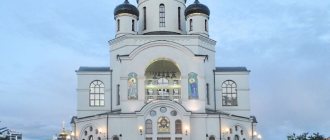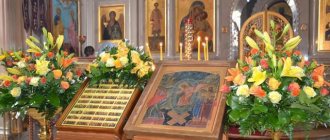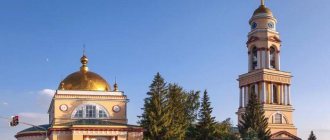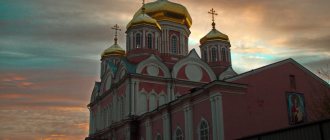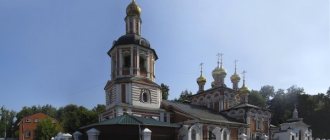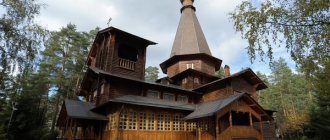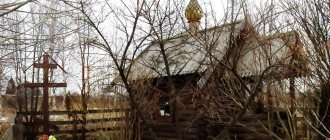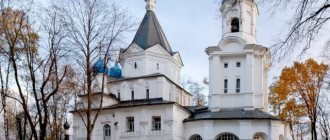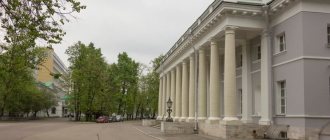Mir
Russia Voronezh region Voronezh Kazan Church (Voronezh) Map is loading...
{"format":"leaflet","minzoom":false,"maxzoom":false,"limit":50,"offset":0,"link":"all","sort":[""], "order":[],"headers":"show","mainlabel":"","intro":"","outro":"","searchlabel":"\u2026 \u0441\u043b\u0435\ u0434\u0443\u044e\u0449\u0438\u0435 \u0440\u0435\u0437\u0443\u043b\u044c\u0442\u0430\u0442\u044b","default":"","import-annotation":false,"width ":"auto","height":"350px","centre":{"text":"","title":"""link":"""lat":51.699983000000003130480763502418994903564453125,"lon": 39.2690079999999994697645888663828372955322265625,"icon":""},"title":"","label":"","icon":"","lines":[],"polygons":[],"circles":[ ],"rectangles":[],"copycoords":false,"static":false,"zoom":8,"defzoom":14,"layers":["OpenStreetMap"],"image layers":[] ,"overlays":[],"resizable":false,"fullscreen":true,"scrollwheelzoom":true,"cluster":false,"clustermaxzoom":9,"clusterzoomonclick":true,"clustermaxradius":80, "clusterspiderfy":true,"geojson":"","clicktarget":"","showtitle":true,"hidenamespace":false,"template":"","userparam":"","activeicon": "","pagelabel":false,"ajaxcoordproperty":"","ajaxquery":"","locations":[{"text":"\u003Cb\u003E\u003Ca href=\"/palomnik/%D0% 9A%D0%B0%D0%B7%D0%B0%D0%BD%D1%81%D0%BA%D0%B8%D0%B9_%D1%85%D1%80%D0%B0%D0%BC_( %D0%92%D0%BE%D1%80%D0%BE%D0%BD%D0%B5%D0%B6)\» title=\»\u041a\u0430\u0437\u0430\u043d\u0441\u043a\ u0438\u0439 \u0445\u0440\u0430\u043c (\u0412\u043e\u0440\u043e\u043d\u0435\u0436)\»\u003E\u041a\u0430\u0437\u0430\u043d\u0441 \u043a\u0438\u0439 \ u0445\u0440\u0430\u043c (\u0412\u043e\u0440\u043e\u043d\u0435\u0436)\u003C/a\u003E\u003C/b\u003E\u003Chr /\u003E\u003Ca href=\"/palomnik /% D0%A1%D0%B2%D0%BE%D0%B9%D1%81%D1%82%D0%B2%D0%BE:%D0%90%D0%BD%D0%BD%D0%BE%D1 %82%D0%B0%D1%86%D0%B8%D1%8F\" title=\"\u0421\u0432\u043e\u0439\u0441\u0442\u0432\u043e:\u0410\u043d\u043d\u043e\ u0442\u0430\u0446\u0438\u044f\»\u003E\u0410\u043d\u043d\u043e\u0442\u0430\u0446\u0438\u044f\u003C/a\u003E: »'\u041a\u0430\u0 437\u0430\u043d \u0441\u043a\u0438\u0439 \u0445\u0440\u0430\u043c»' — \u043f\u0440\u0430\u0432\u043e\u0441\u043b\u0430\u0432\u043d\u044b\u04 39\u0445\u0440\u0430\ u043c \u0432 \u0447\u0435\u0441\u0442\u044c \u041a\u0430\u0437\u0430\u043d\u0441\u043a\u043e\u0439 \u0438\u043a\u043e\u043d\ u044b\u0411\u043e\u0433\u043e\ u0440\u043e\u0434\u0438\u0446\u044b \u0432 \u0412\u043e\u0440\u043e\u043d\u0435\u0436\u0435.","title":"\u041a\u0430\u0437\u0430\u 043d\u0441\ u043a\u0438\u0439 \u0445\u0440\u0430\u043c (\u0412\u043e\u0440\u043e\u043d\u0435\u0436)”,”link”:””,”lat”:51.699983000000003130480763 502418994903564453125,"lon":39.2690079999999994697645888663828372955322265625, "icon":""}],"imageLayers":[]}
51.699983; 39.269008
Russia, Voronezh, Suvorov street, 79
Voronezh, Voronezh region 394063
Russia
Telephone
: 8 (473) 223-06-88; 8 (473) 223-05-95
Kazan Temple
- an Orthodox church in honor of the Kazan Icon of the Mother of God in Voronezh.
History[edit]
For centuries there has been a temple in Otrozhka in honor of the Kazan Icon of the Mother of God. The storms of the 20th century crashed against its stone walls, but it survived. The old temple has seen a lot in its time. And now, just like a hundred years ago, bells sound invitingly from its belfry every day, gathering believers to prayer.
According to historical information, Otrozhka (Rozhki, Atroshki, Otrozhki, Tregubovo) arose in the 17th century near the ledges, or “spurs” (hence the name), on the left bank of the Voronezh River. The settlement was assigned to the possessions of the Alexievsky Akatov Monastery and in 1629 there were only six peasant households. The most intensive development of Otrozhka took place in the 19th century, when several village blocks located along the only street began to be added to new ones in the eastern and southern directions along the road leading to Pridacha. In the middle of the 19th century, the Voronezh zemstvo petitioned the government to build a railway between Voronezh and the Ryazan-Kozlovskaya line. The request was granted. The road was built in 1867, and regular train service began the following year. Razdelnaya junction station appeared near Otrozhka. At the end of 1870, a single-track section of the road from Razdelnaya to Liski was built. Until the beginning of the 20th century, Otrozhka, despite the sharply increasing number of inhabitants, remained a village, that is, a large settlement that did not have its own church. The nearest Church of the Nativity was located on Pridacha.
At the beginning of the 20th century, the natives decided to build their own temple. According to legend, heated debates broke out among the residents of Otrozhka about where the temple should stand and in honor of what event it should be consecrated. And then one day local resident I.D. Kolbeshkin, leaving his house in the evening, saw a pillar of light descending from the sky, in the center of which was the Kazan Icon of the Mother of God. He pointed to a vacant lot among houses. He told his fellow villagers about his vision, the disputes stopped, and in this wasteland in 1903 a temple was founded in honor of the Kazan Icon of the Mother of God.
For a long time it was believed that the construction of the Kazan Church was completed by 1908. This date was included in local history publications dedicated to architectural monuments of Voronezh. The materials of the Code of Historical and Cultural Monuments of the Russian Federation “Historical and Cultural Heritage of Voronezh” state that the Kazan Church was consecrated in 1912. However, in the statements on insurance of church buildings, compiled on the eve of the revolution, the completion of the construction of the Kazan Church dates back to 1911. A small note about this event in the Voronezh Telegraph newspaper contains information that the Kazan Church in Otrozhka was consecrated on November 5, 1911.
Even before the completion of the church, local residents built a cemetery adjacent to it, one of the few preserved in Voronezh from those times. There is still an intact foundation stone with the date of the consecration of the churchyard - June 2, 1908.
The Kazan Church became the first temple in Voronezh, built at the beginning of the 20th century, on the eve of the 1917 revolution. The second was the majestic cathedral in the name of Equal-to-the-Apostles Prince Vladimir, built according to the design of A.A. Cuy in 1896-1918 and blown up by godless authorities in 1930.
The Kazan Church was luckier. After its construction, the expanded Otrozhka received the status of a village. A rural center developed around the church. The appearance of the central part of the settlement was distinguished by its unity of artistic design. The red-brick church with green tents and sky-colored domes, which became the dominant feature of the building, was complemented by the buildings of the zemstvo school and the houses of the clergy with the decoration of the facades characteristic of the beginning of the century. There were a number of buildings on the church estate: a stone gatehouse, a priest's house, two residential clergy houses, a wooden almshouse, several sheds with sheds and even a stable.
Little information has been preserved about the internal life of the Kazan parish. Due to the late construction, the church was not included either in publications on the history of the diocese or in the clergy registers of 1911. In this summary statement, her parish, numbering 292 houses with a population of 1,722 people, is assigned to the Nativity Church of the Addition. Parish life went on as usual for two decades, until the fateful thirties came...
One of the region’s historians recorded the events of 1936 in Voronezh in his chronicle. That year, the poet O. Mandelstam was in administrative exile here, the region was awarded a government award, the educational park and the chairman of the All-Russian Central Executive Committee visited the city, production plans were exceeded. And the historian bashfully remained silent about only one event. In 1936, the anti-religion campaign reached the Kazan Church. In the same year, local authorities of the NKVD arrested all its clergy, divine services stopped and the church was closed. Unfortunately, the names of the arrested priests could not be established.
In August 1939, Otrozhka was included in the city limits of Voronezh. And a year earlier, the ancient village of Otrozhki, Novousmansky district, became part of the workers' village of Otrozhka. The number of inhabitants increased, life became more intense. And only a silent reproach, reminiscent of the time of the “godless five-year plans,” stood the desecrated and plundered temple, gaping with empty eye sockets of window openings. Not only all the shrines and iconostasis were stolen from it, but also glass windows and even wooden floors.
In the summer of 1942, the front came very close to Voronezh. In July, hot battles between Soviet soldiers and fascists broke out within the city limits of Voronezh. Within a few days, the enemies managed to capture the right bank part of Voronezh, its historical center. One of the fierce battles took place in the area of the Otrozhensky bridge. The Kazan Church, which found itself at the center of the fighting, was severely damaged, but was not destroyed. The Divine Mother covered her with her omophorion.
In January 1943, the front from Voronezh rolled back to the west. The city was still in ruins when the natives decided to seek the revival of the temple. In August of the same year, the so-called church “twenty” was created, parishioners turned to the district council with a request to register the community and open a temple, and, despite certain relaxations in relation to religious associations and some mitigation of the previous repressive policy to strangle the church, believers needed a general difficulties of about three years of struggle with the authorities for the right to revive the temple and begin a full-fledged parish life. On October 5, 1946, the regional executive committee decided to open a church in the village of Otrozhka, Zheleznodorozhny district, Voronezh.
The modern history of the Kazan Church dates back to December 10, 1946, from the moment the community was registered. Initiative parishioners began to make every possible effort to restore the Church that had suffered during the war. The shell holes were repaired, a new wooden floor was laid, and the windows were glazed. To hide the marks of bullets and shells on the walls, the outside of the temple was whitewashed. The year 1954 was marked by the installation of an iconostasis, which was made by a carver from Novaya Usman.
During those difficult years, the clergy of the temple experienced constant pressure from the Committee on Religious Affairs. The clergy and temple employees were regularly summoned to the regional executive committee for “educational conversations.” Often parishioners were required to denounce the priests.
The eighties of the last century became fertile for the clergy and parishioners of the Kazan Church. At this time, extensive restoration work began. The outer walls regained their original appearance: numerous layers of whitewash were removed from them, the brickwork was renewed in a number of places, the fourth dome of the temple was restored, new crosses were erected, and the roof was replaced. In the 90s, the walls of the temple were painted again. In 2009, the dome crosses were replaced. After the restoration, the temple was literally transformed. In 2010, to complete the large-scale restoration work, the old iconostasis, which had become dilapidated over half a century, was replaced with a new one. The entrance group was restored to its original form, consisting of forged openwork metal double-leaf gates and two gates installed in a brick arch.
Currently, on a land plot of 1.5 hectares there is a complex of buildings, the center of which is the three-altared Kazan Church with side chapels in the name of St. Nicholas the Wonderworker and Mitrofap of Voronezh. In the 90s of the 20th century, a building for a Sunday parochial school was built with a baptismal church in the name of St. Seraphim of Sarov, as well as a water-blessing chapel in the name of St. Andrew the First-Called Apostle.
Current state
Today, on an area of 15 hectares, there is an entire temple complex with numerous buildings.
Kazan Church (Voronezh) is made in pseudo-Russian style. The brick building with white columns is built in the shape of a cross with five blue domes. The interior decoration of the temple surprises with its richness and splendor.
In the late 90s, a Sunday school with a baptismal church in the name of Seraphim of Sarov and a water-blessing chapel, consecrated in the name of St. Andrew the First-Called, were built on the territory of the Kazan Church.
Shrines[edit]
The main shrine of the temple is the Kazan Icon of the Mother of God
. The icon was painted with the blessing of Archbishop Anastasius (Dobradin) of Voronezh and Zadonsk (1891-1913) in the workshop of St. Andrew's Skete on Mount Athos specifically for the consecration of the Kazan Church in Otrozhka. This is evidenced by the signature at the bottom of the temple image. His arrival from the Holy Mountain to the distant black earth Otrozhka, inhabited by ordinary people, cannot be called anything other than a miracle, a spiritual blessing from the Mother Superior of the Holy Mountain - the Most Pure Virgin Mary.
The icon was preserved during the persecution of the Church and during the fiercest battles for Voronezh during the Great Patriotic War by a pious parishioner of the church, Nikolai Mikhailovich Ryabykh. He secretly transferred the temple icon to his house, where the miraculous image was then kept for many years. According to the testimony of old-timers of Otrozhka, having heard about the opening of the Kazan Church, N.M. Ryabykh set out to return the icon to its place, but could not, no matter how hard he tried, move it from its place. Then he went to the priest for admonition. Father decided to serve a prayer service to the Most Holy Theotokos in the house of a pious Christian. And only after that they were able to transfer the icon to the temple.
In 2001, a carved wooden canopy was installed above the icon, made by Voronezh carver Lev Shevchenko.
Time of revolution and devastation
With the advent of revolutionary changes, schismatic Gregorians seized the Kazan Voronezh Church, and in 1936 it was closed by the NKVD, all the clergy were arrested, unfortunately, history did not preserve their names, church treasures were looted.
In 1938, the village of Otrozhki merged with the village, and then with the city of Voronezh.
During the Second World War, the once magnificent structure fell into ruin, but the Mother of God preserved the structure during heavy shelling during the German invasion of Voronezh.
Only in 1946 did the authorities hand over the Kazan Church to believers, who began its restoration with their donations.
During the Soviet times in Voronezh, services were held in only three churches, the Intercession of the Mother of God, St. Nicholas the Pleasant and the Kazan Mother of God.
Abbots
- Ioann Alferov (mentioned 1912)
- Nikolay Tsvetaev (1946 - 1947)
- Nikolay Zelenev (1947 - 1949)
- Alexander Spassky (1949 - 1961)
- Nikolay Poteleschenko [1] (1961 - 1963)
- Mitrofan Charkin (1963 - 1964)
- Nikodim Ermolatiy (1964 - 1968)
- Mitrofan Charkin, again (1968 - 1984)
- Valentin Abashev (1984 - 1989)
- Evgeniy Livshuk (1989 - 2003)
- Ioann Lukanov [2] (mentioned 2003)
- Daniil (Cheroy) (mentioned 2003)
- Grigory Samoilov (January 20, 2004 - April 13, 2005), acting
Reconstruction of the Kazan Church
Large-scale reconstruction was first carried out in the 80s of the last century. Many local clergy consider this time to be blessed. This is due to the fact that it was during this period that it was allowed to direct donations from parishioners to the restoration of their temple, and not to give to the restoration of abstract landmarks.
Thanks to competently carried out restoration measures, the external appearance of the building has changed greatly and acquired its historical appearance. All the whitewash was cleaned, the brickwork was renewed and a new roof was installed. The 4th tier of the belfry, destroyed during wartime, was also restored. New gilded crosses appeared on it.
Gilded crosses on the domes of the temple
A few years later, the walls were painted, and in 2009, crosses above the dome appeared. Internal work ended in 2010 with the replacement of the iconostasis, which by that time was in a dilapidated state. Forged openwork gates were installed at the entrance.
The temple area today occupies one and a half hectares. There is a complex of buildings here. The central element is the three-altar church, which is striking in its magnificence. In the nineties of the 20th century, the parish school was recreated, as well as a small chapel consecrated in the name of St. Andrew the First-Called.
The amazingly beautiful temple, originally created in accordance with Russian national traditions, symbolizes the border between the past and present of the ancient city. In the immediate vicinity of the Kazan Church there are multi-storey buildings. But literally a stone's throw away is a well-kept private sector with one-story houses, which are a reminder that this is where the ancient village of Otrozhka was located.
Today the church is officially considered a city landmark and is protected by the state. Divine services in the Kazan Church of Voronezh are held regularly and attract many parishioners. But even between services the church is never empty. Believers come here to pray to the Higher Powers, light candles for the health or repose of dear people.
Author: Nina Pavlushina

